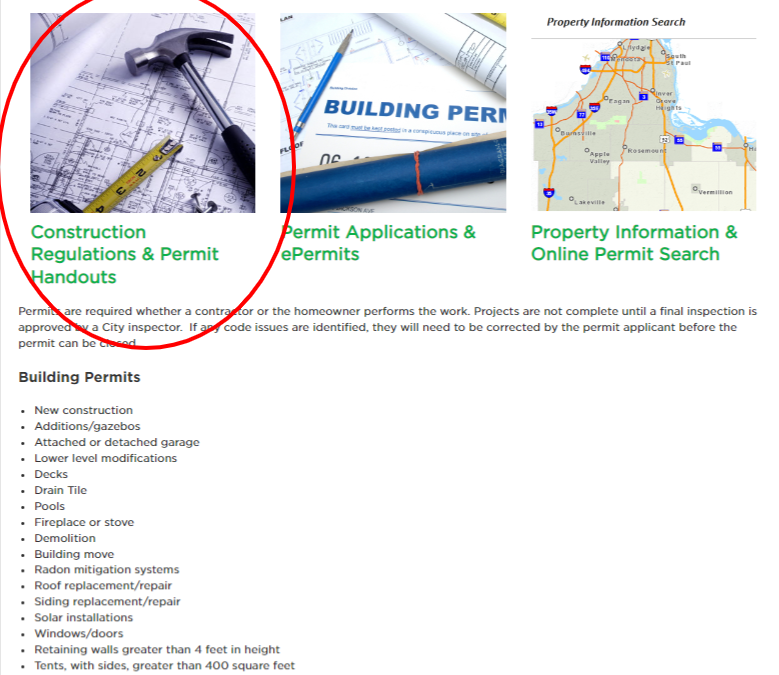With the weather in the Midwest turning cold quicker than normal this fall, many people are turning on their furnaces. In my experience, more than half of homes sold in the greater Twin Cities metro are also equipped with a whole-home humidifer (often known by the brand name “Aprilaire”). If you did a home inspection, you probably also received some warnings about the dangers of these devices. Many people don’t know how to properly set and maintain a whole home humidifier! To that end, I would like to help anyone who wishes to use their humidifer in a way that makes your home comfortable WITHOUT causing damage to your home. Today we’ll talk about three things related to humidifiers including what they are/how they work, the dangers of an improperly set up or maintained humidifier, and how to ensure yours is set properly.
Humidifier Basics
A whole-home humidifier is a component or accessory to your furnace. The idea is that the system introduces water to the conditioned and heated air flowing through your heating vents to make you feel more comfortable and not dry out your home during the cold winter months.
During spring, summer, and fall, we feel most comfortable when the humidity is between 30 and 50%. As we turn on forced air furnaces in our homes, the recycling of air and heating by the furnace causes this level to drop, making our skin feel itchy and generating lots of static electricity. Anyone who grew up in the Midwest recalls torturing siblings by shuffling across carpet to deliver the shock of a lifetime to an unsuspecting victim!
A whole home humidifier is attached to the ductwork on the outflow side of your furnace, and a line is run from the water supply to the humidifer panel. As warm air crosses over the panel to your ducts, it picks up some of the moisture and distributes it through the house. Homeowners can control the humidity level (more on that later) to dial in the comfort setting via a humidistat nearby the humidifier. Some common brands include Honeywell, Aprilaire, and Emerson. Take a look at the common elements of a modern unit below.

Diagram of an Aprilaire 400 unit, which is common in many newer installations.
There’s a dark side to these units, however, and the fact is most homeowners have little understanding of HOW to run them, so they tune it out. In newer models that are fully automatic, the risk is less, but in older models, the “set it and forget it” mentality can cause BIG problems and expenses for people in your household and your home in general.
Humidifer Dangers
Improperly adjusted humidifiers aren’t the only threat to our homes in the winter time, but they can make a bad situation worse if left unchecked. The most basic problems tied to whole home humidifiers (especially older rheostat style Aprilaire units) are excess moisture that can cause damage to interior wood around windows, and condenssation around windows at other times. The most severe consequences can include environments ideal for mold growth in the ductwork affecting the air you breathe, as well as the potential for mold growth and condensation in areas without adequare air flow and exchange.
The key is to maintain a proper humidity within the home, and what is “ideal” changes with the temperature outside. For this reason, the best units are tied to sensors that measure indoor and outdoor temp and humidity to control the setting on your humidifier. Since many homes have older units, we often encounter less smart systems that can be adjusted by percentage humidity OR a simple number on a dial. All of these MAY be connected to an outdoor thermometer but it’s not wise to simply believe that it’s all working, it’s better to know. If you have condensation on your windows regularly, that’s the first sign something isn’t working right, so we’ll spend some time in the next section discussing how to make sure you’re getting the most out of your humidifier.
Proper Use and Setting of a Whole Home Humidifier
Many homeowners don’t CHOOSE to have a humidifer, rather they buy a house that has one. The first step is familiarizing yourself with the unit in your house. If you cannot find out more information, or aren’t sure it’s working, you should call a professional to check it out before using it. It’s better to have it in the OFF position than to use it without understanding.
Here are the keys to using a humidifier correctly:
- Ensure the damper is in the OPEN/WINTER setting. There is a bypass that should be closed in the summer (when the air conditioner is in use) and opened in the winter (when the furnace is in operation). If this is non functional, have it corrected.
- Ensure the water supply is turned on to the unit – this will be traceable from a small copper line typically to a valve in a larger copper line. If this is not functional, have it fixed.
- Replace the humidifier panel (aka water panel) in the unit as directed. Depending on your particular unit, this may be every 3 months to every year. These can typically be found at a hardware store.
- Start with a low setting of either 1 or 2 in simple models, or dependent on temperature for models with percentage. As a good rule of thumb aim for 30% when the temp is 20-30 degrees, 25% for 10-20 degrees, and 20% for 0 to 10.
- If you see condensation on your windows, plan to cook a big meal, or fill your house with guests, drop the percentage back further.
To help you maintain proper humidity, you may consider a “hygrometer” for your home – these tell you what the current humidity level is in your home. If all of this sounds intimidating, you can either shut your humidifier down, or have it removed. Many people are satisfied with using portable humidifiers in the home occasionally or in places like the bedroom. There is still a risk of over humidifying, but it is less than an un-checked whole house system. Some HVAC professionals trust and recommend whole home humidifiers, but some are skeptical. I assure you, most home inspectors fall on the skeptic side! I have heard some professionals say that the average family taking baths/showers and cooking at home generates an adequate amount of humidity without an Aprilaire or other whole home humidifier.
I don’t mean to pick on these units. They are not the only cause of unwanted home moisture that leads to damage of materials and biological growth, but they can do damage quickly if they are not maintained. This winter, make sure you’re getting the most out of whatever system you use – you’ll be more comfortable and spend less money in the long run. I am happy to recommend professionals for your needs, just give me a call or send me an email from my contact page.

